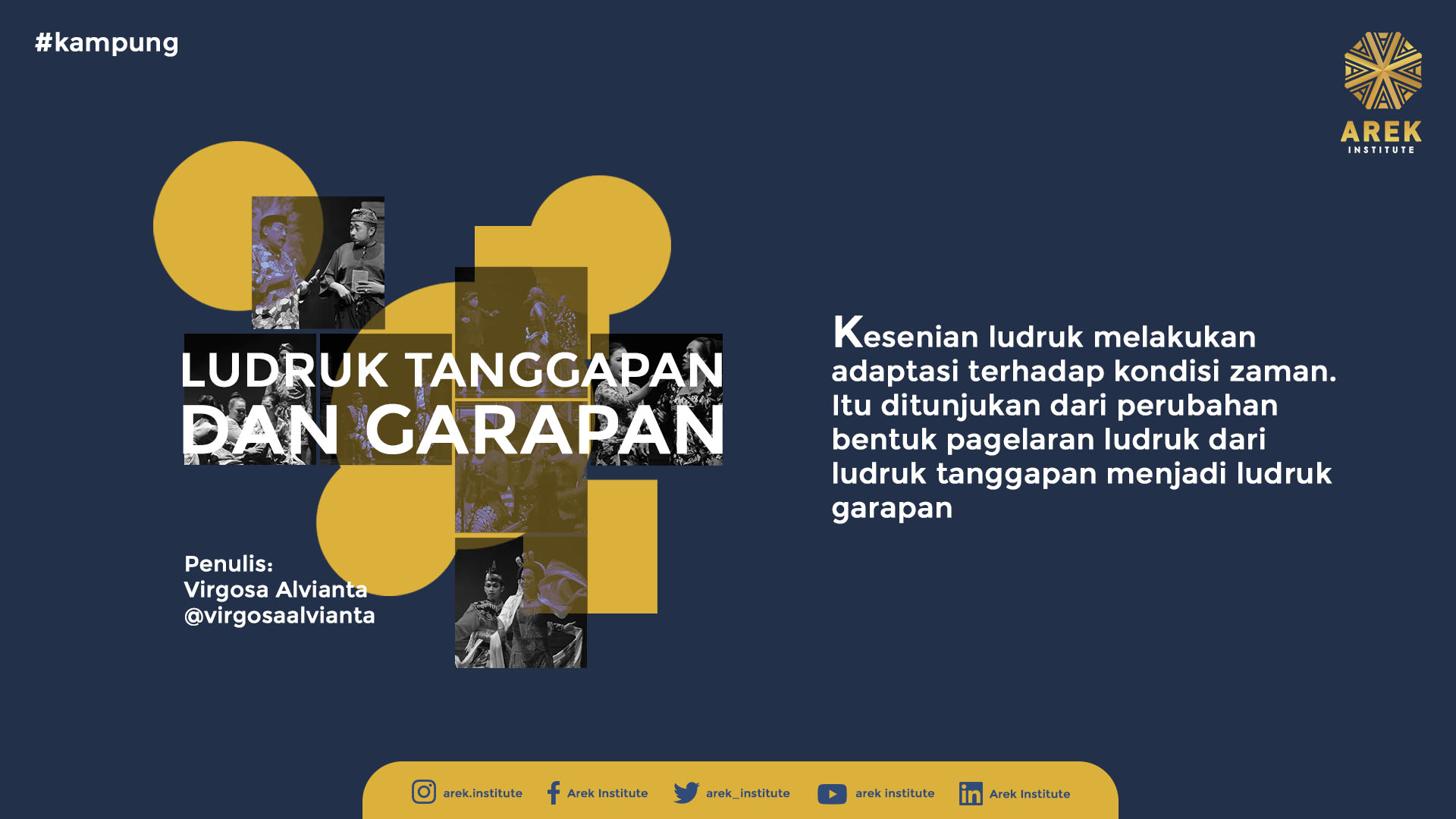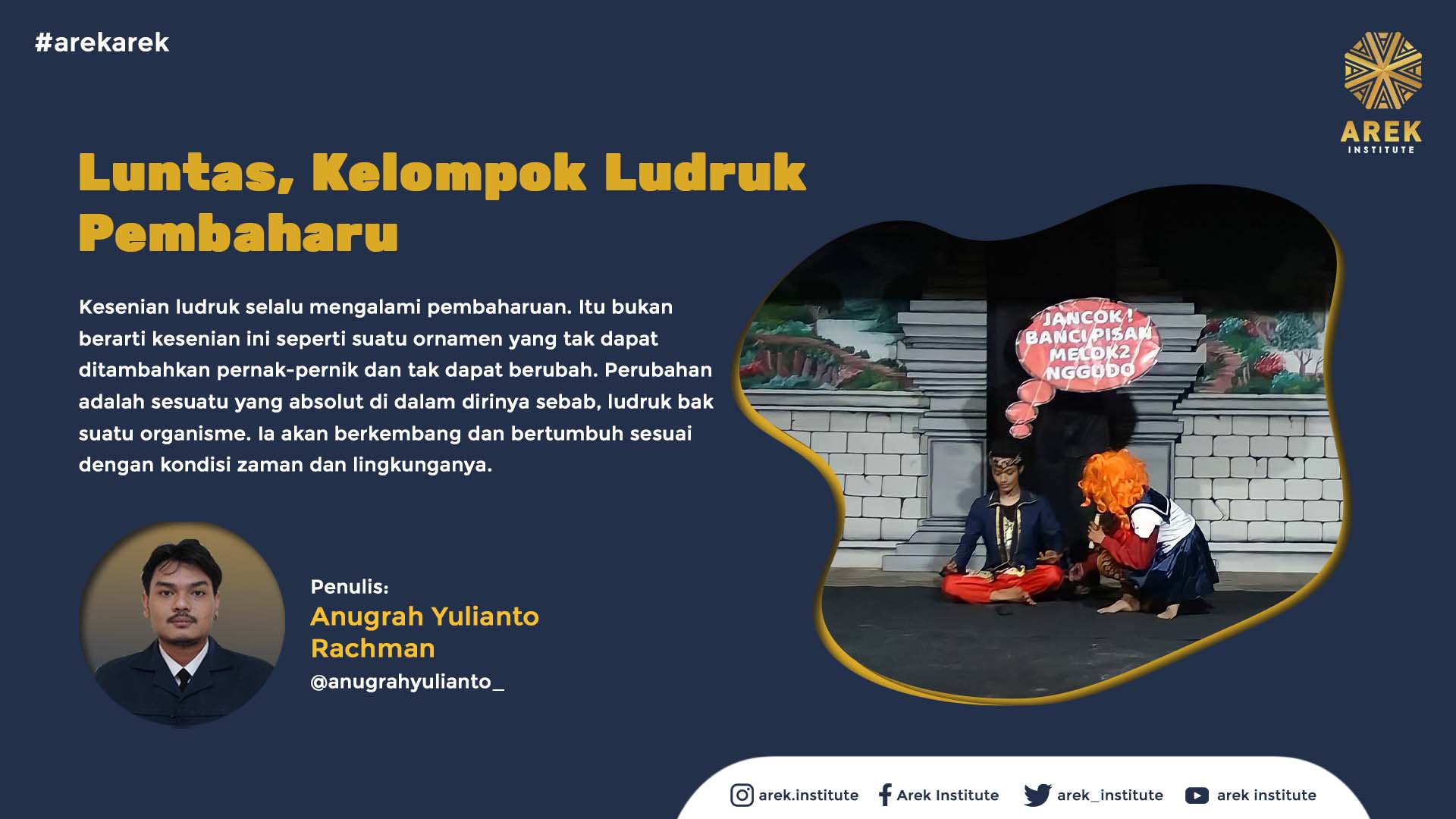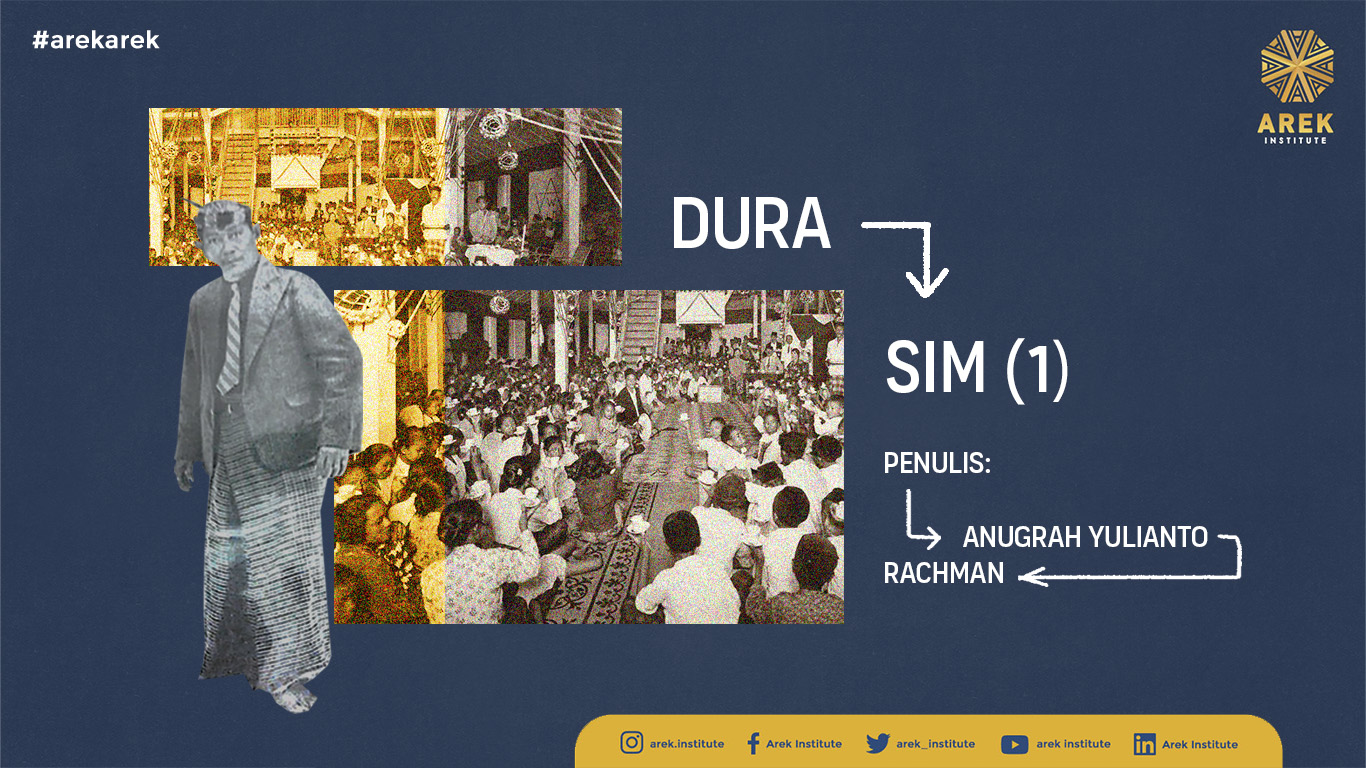
Durasim (1)

Anugrah Yulianto Rachman | CEO and Founder of Arek Institute | Anthropologist
Cak Durasim is always placed as a pioneer in the art of Ludruk. His presence is also associated with the early development of this art form, and he is known for inventing Ludruk from its previous forms, namely: Lerok and Besut. Even his legendary name is embedded in a complex of arts and culture in East Java. However, no one has ever known for sure the track record of the journey of his Ludruk group.
Cak Durasim, who is also called Gondoredjo Durasim, is always known through his Ludruk Organisatie (LO) (Supriyanto, 2018). This is the starting point of the development of Ludruk into a complete package of East Java’s art as it is today. Big names in the world of Ludruk are also intertwined with him, such as: Pak Doel, Wakidin, Minin, and Toegi (Soeara Nirom, 1939a). They are the names involved in the broadcast of Durasim’s Ludruk on Nirom radio.
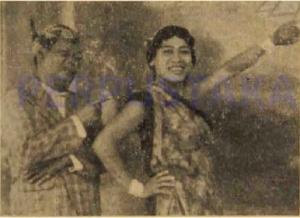
Image 1 Cak Durasim with Minin in the magazine Soeara Nirom
The magazine Soeara Nirom becomes an important library in recording the journey of Cak Durasim’s Ludruk group. This magazine records various titles of Ludruk plays that have been broadcast by it. In the range of Soeara Nirom magazine publication in 1939, there are about 27 Ludruk plays listed in the broadcasts of this group. The titles of these plays are as follows:

Image 2 Collection of Durasim’s Plays based on Soeara Nirom Magazine
The 27 plays of Cak Durasim were broadcast periodically on Radio Nirom (Soeara Nirom, 1939b, 1939a, 1939c, 1939d, 1939e, 1939f, 1939g, 1939h, 1939i). This data represents the titles of the plays and the frequency of broadcasts for each play collected from several archives of Soeara Nirom magazine. In a report about the early development of Ludruk, the magazine Soeara Nirom describes how difficult it was for Cak Durasim to adapt Ludruk performances into broadcast form and to create Ludruk plays. However, Durasim gathered inspiration from readings that were widely provided by Balai Pustaka at the time.
Furthermore, the famous Ludruk plays of Cak Durasim also appeared in broadcasts on Nirom radio. These plays are Mbok Rondho Sakit and Bakar Bakir. Each of them is presented in 4 acts. This division aligns with the postcards published by Odeon Gajah which show the appearance of these plays in the form of vinyl. These postcards not only display recordings of Cak Durasim’s Ludruk but also show the figure of Cak Durasim.
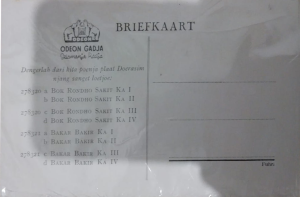
Image 3 The back of the Odeon Gajah postcard regarding the title of Ludruk Durasim’s recording

Image 4 The front of the postcard displaying a photo of Cak Durasim
Cak Durasim is also known as a representation of Ludruk Surabaya. However, the data presented in the chart above is based on direct mentions of Cak Durasim’s name both as a leader and the name of the Ludruk group. This is because there are also Ludruk Surabaya group broadcasts without any mention of a leader or the name of Cak Durasim. Some plays presented by the Ludruk Surabaya group also have titles similar to those of Cak Durasim’s plays.
In the broadcast reporting of Soeara Nirom magazine, there are two categorizations directly related to the name of Cak Durasim, namely: “Ludruk Surabaya Group Led by Durasim” and “Ludruk Durasim from Surabaya”. Meanwhile, during the same period, there were several other Ludruk groups that also broadcasted, such as: the Ludruk Surabaya group and Ludruk Sekar Enggal led by Abdoel Hamid.
Cak Durasim’s Ludruk Organisatie Claim The curation and codification of Cak Durasim’s broadcast plays are based on the mention of Cak Durasim’s name in the Ludruk group broadcasts on Soeara Nirom magazine. This is because many Ludruk groups had already started to develop during the 1939 period. Even 10 years earlier, the Ludruk Durasim group was already paired with the Ludruk Genteng group. Although many writers mention that Ludruk Genteng is Cak Durasim’s Ludruk group—less famous (Indonesia Kaya, n.d.; Setiawan, 2020).
At a Java-Instituut conference in Surakarta in 1929, R. Ahmad Wongsosewojo reported on the condition of Ludruk art. He described the early development of Ludruk art in the form of Besut plays during Cak Durasim’s period. The article reported the existence of the quite famous Ludruk Genteng group in Surabaya, and also the Ludruk Durasim group along with Persatuan Bangsa Indonesia (PBI) by Dr. Soetomo (Wongsosewojo, 1929).
This report illustrates the early development of Ludruk art during the Durasim period. Ludruk plays were still limited to the use of plays and the ritual traditions of Besut art. However, the documentation of Ludruk Durasim as Ludruk Organisatie (LO) was not yet explained. It only writes about Ludruk Durasim. In line with the titles raised in Nirom magazine, the Java-Instituut report also uses the term Ludruk Durasim instead of LO.
The use of the term LO is a term used by Ludruk researchers, such as Henricus Supriyanto, in outlining the development of this art. In research far before Henricus, the term LO Durasim was not widely used (Frederick, 1989; Peacock, 2005). Durasim is only described as an organizer in mobilizing Ludruk art and also as an anti-colonial activist.
In other words, the journey of Ludruk Durasim has been forged in a long journey both on the academic stage and in Ludruk performances. Its tracks have been recorded in various archives and previous studies.
Bibliography
Frederick, W. H. (1989). Pandangan dan Gejolak Masyarakat Kota dan Lahirnya Revolusi Indonesia (Surabaya 1926-1946). PT. Gramedia.
Indonesia Kaya. (n.d.). Ludruk, Kesenian Guyonan Asal Jawa Timur. Indonesia Kaya. Retrieved December 21, 2023, from https://indonesiakaya.com/pustaka-indonesia/ludruk-kesenian-guyonan-asal-jawa-timur/
Peacock, J. L. (2005). Ritus Modernisasi Aspek Sosial & Simbolik Teater Rakyat Indonesia (Miftahuddin (ed.)). Desantara.
Setiawan, A. (2020). Dua Legenda Ludruk Indonesia. Historia. https://historia.id/kultur/articles/dua-legenda-ludruk-indonesia-Dpgrl/page/1
Soeara Nirom. (1939a, January). –Loedroek Tjak Doerasim–Soerabaia. Lakon: ,,Pengaroehnja Senjoeman”. Soeara Nirom. 01
Soeara Nirom. (1939b, January). Loedroek Soerabaja dipimpin oleh Doerasim. Soeara Nirom.
Soeara Nirom. (1939c, February). –Loedroek Pak Gondo a. Tjak Doerasim–Soerabaia. Soeara Nirom.
Soeara Nirom. (1939d, May). –Loedroek Tjak Doerasim–Soerabaia. Soeara Nirom.
Soeara Nirom. (1939e, July). Loedroek Soerabaja. Soeara Nirom.
Soeara Nirom. (1939f, August). Loedroek ,,Tjak Doerasim” (Soerabaja). Soeara Nirom.
Soeara Nirom. (1939g, September). Loedroek (Soerabaja). Soeara Nirom.
Soeara Nirom. (1939h, October 29). Siaran Barat Djawa Tengah Dan Timoer. Soeara Nirom.
Soeara Nirom. (1939i, December). Siaran Barat Djawa Tengah Dan Timoer. Soeara Nirom.
Supriyanto, H. (2018). Ludruk Jawa Timur Dalam Pusaran Zaman. Beranda Kelompok Intrans Publishing.
Wongsosewojo, R. A. (1929). Loedroek. In Java Instituut.

